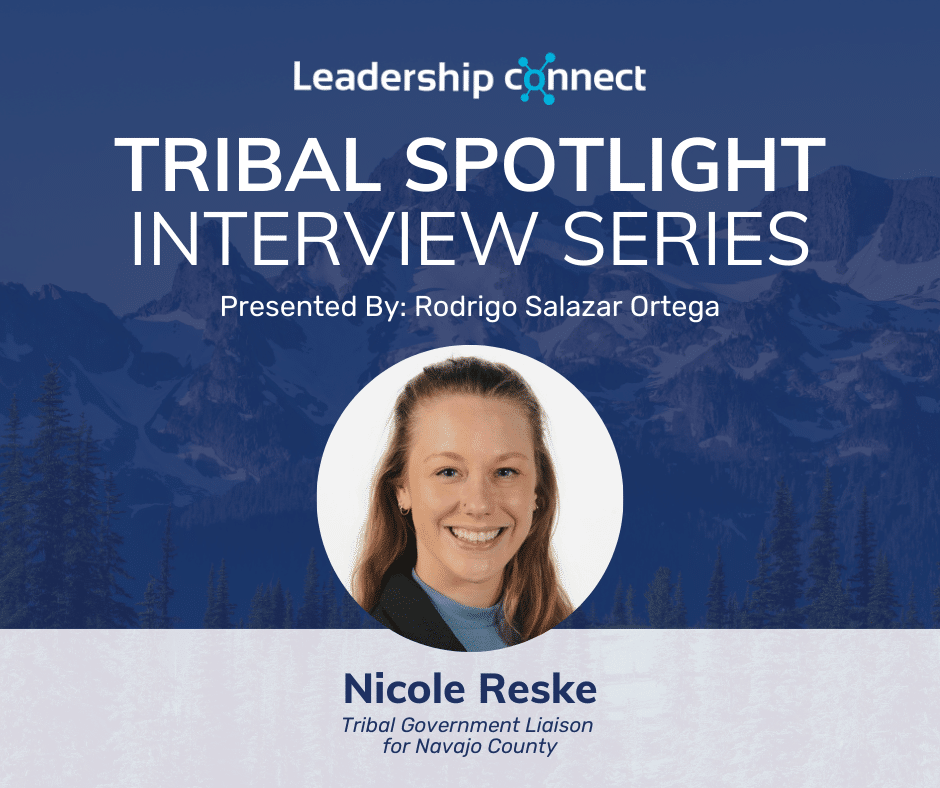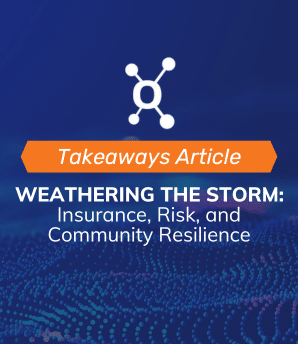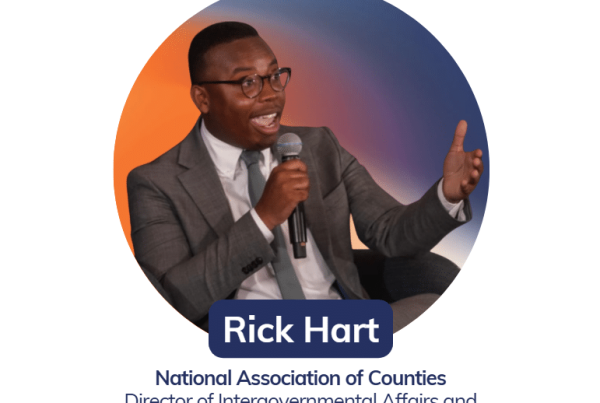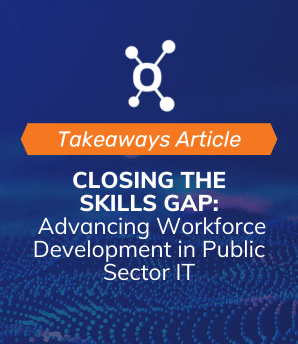
For this installment of the Tribal Spotlight Series Nicole Reske, the Tribal Government Liaison for Navajo County, shared her journey from archaeology to Tribal Government Relations, how she navigates the complexities of working across multiple jurisdictions, and her dedication to educating and fostering partnerships with Tribal Nations.
Takeaways:
- Building strong relationships with Tribal Nations requires patience, persistence, and an understanding of their unique governmental structures and cultural practices.
- Effective Tribal Government Relations involve consistent self-education and adaptability, as no two Tribal Nations or their legislative priorities are the same.
- Engaging in person and investing time in Tribal communities strengthens trust, fosters collaboration, and bridges gaps in communication.
Can you tell me about your career path that has led you to where you are now?
Ending up in Tribal Government Relations was an accident; I did not know this career path existed until four years ago. I graduated with a Bachelor’s in Archaeology, intending to get a PhD and use it for teaching. When I was asked in my senior year why I chose archaeology, I responded with: I want to give a voice to those that were historically silenced; to amplify the voice of the stories that deserve to be heard. After three months of shovel bumming, I was inclined to look for different ways I could use my degree to effect change. Eventually, I was recruited as the Assistant Tribal Historic Preservation Officer for a tribe in Northern Wisconsin. After holding this position for almost three years, I completely changed the course of my career. I was inspired to apply to the master’s in legal studies program for Indigenous Peoples Law at Oklahoma University about a year and a half into the position. Archaeology tends to view tribal governments more retrospectively while working directly on behalf of tribal governments allows you to lift their voices proactively and in alignment with their current aspirations. With the completion of my master’s degree and dedicated work experience, I collected a very niche set of diplomatic skills that led me to work for the Navajo County Administration.
How did you become passionate about the intersection of government and tribal communities, and how do you stay informed and engaged in those areas?
It did not take long for me to realize tribal governments were at a disadvantage when interfacing with state and federal governments and their agencies. Tribal governments struggle to maintain capacity, which can make them vulnerable to being taken advantage of. There is a consistent need to help build up capacity and educate all those involved on the best path forward for partnerships.
Each government, tribal, state, and federal, all have different structures as well as cultures. All three sovereigns speak slightly different political languages. I saw this as an opportunity to translate the communication and provide education on both sides. I discovered I sincerely enjoy teaching anyone and everyone about tribal sovereignty and how best to protect and support it. Keeping up with indigenous news outlets, law cases, and current political relationships has been incredibly beneficial to staying informed.
What do you believe sets Tribal Government Relations apart as a unique work environment, and how do you navigate its challenges in your everyday work?
All 574 federally recognized tribes have varying government structures and have different legislative priorities; meaning just because you have worked for one tribe does not mean you can apply that experience to another. For obvious and valid reasons, tribal governments can have skepticism when working through partnerships with federal and state agencies. It takes a truly dedicated individual to patiently undo the misconceptions they may have and bridge the gap with trust. In many instances, not only does one have to do this for the tribe but also the contractors working for them. I have met many contractors who believe the reservation is a no man’s land for construction permits, when in fact they must work under the tri-sovereigns of federal, state, and tribal law.
There can also be heavy red tape involved when partnering with tribes that can cause projects and development to face hiccups if stakeholders do not understand the processes. For example, a legal review may add at least six months to a project timeline, or you may need to factor in when each Council or Commission assembles to meet the desired deadlines. To successfully navigate these challenges in the tribal government sector, I focus my energy on building trust in the relationships with our tribal partners and educating not only myself but all those involved on the best path forward.
Describe challenges that significantly influenced your growth as a professional. How did you handle the challenge, and what did you learn from the experience?
Being employed by Navajo County, after only working for tribal governments, was one of the more challenging shifts in my professional career. In fact, I would argue it was even more challenging due to the grey areas and legal limitations. There is no solidified pathway, such as federal consultation, for counties to follow when interacting with tribes. Being a subset of the state, the County must respect and defer to the sovereignty of the tribes. Therefore, my job involves education on how the County can best partner with them and then waiting until they come forward with requests for assistance or projects to support.
Understanding and breaking down jurisdictions within Indian Country can also be challenging, to say the least and this position is no exception. On reservations, you may have to delineate jurisdictions between tribal, state, federal (BIA), and county, especially when it comes to transportation and roads. For example, in Navajo County alone you would have to consider the following governments: the state of Arizona, the White Mountain Apache Tribe, the Hopi Tribe, the Navajo Nation, and five BIA agencies. To add further complexity, the Navajo Nation operates under the Local Governance Act of 1998 which delegates some authority to some of the Chapters or local governments. This Act allows them to enter into legal agreements with the County and bypass central government red tape under specific circumstances. Also, as a non-native, I’ve had to invest significant time and energy into building relationships. This often means I choose to drive a few hours to be in person, rather than taking the virtual option. Showing up in person allows me to be more than just an email signature or voicemail box.
What advice would you give to someone navigating how to bridge the gap between traditional practices and modern governance structures?
The past five years of working with and for tribes in the Midwest, Southeast, and now in the Southwest provided me with a better comprehension of the complexities within tribal governments. Each tribal governmental structure varies with the types of Councils, Commissions, and auxiliary branches, as well as sub-committees that have authority in the tribe’s legislative processes. And since there are 574 federally recognized tribes, this involves consistently educating yourself and your staff on who is the best point of contact for each interaction, as those can change frequently. I have noticed that persistence and patience are key to working in partnership with tribal governments. I have also found that engaging the tribal communities in person, going to the Chapter Houses on the Navajo Reservation or communities on the Hopi or White Mountain Apache reservation is imperative to maintaining solid relationships with them. Investing time in person with the communities is especially important as many tribal citizens in our County are without Wi-Fi or cell service.
Word Association, what is the first word that comes to mind for each of there?
- Policy – Implementation
- Networking – Growth
- Communications – Imperative
- Leadership Connect – Opportunity






